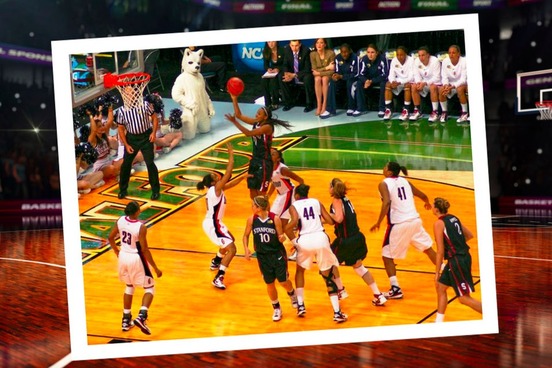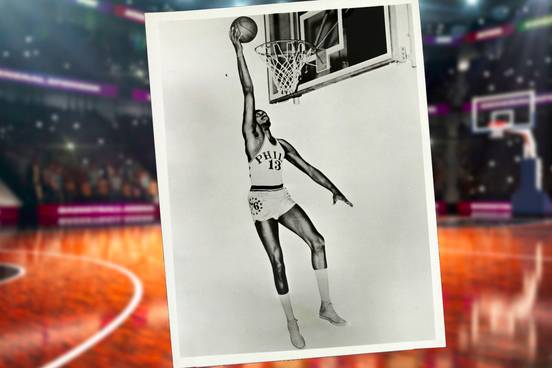
Slam dunk
Definition: something that is sure to happen or to be successful
“The replays of Jerry West jump shot at the buzzer, a slam dunk by Wilt Chamberlin, and a twisting drive by Elgin Baylor are presented in the I,P-T by Doug Ives.”
—Adv’t, The Independent [Long Beach CA], 29 April 1969
The slam dunk is the more forceful rendition of the simple dunk, which is itself a shot whereby a basketball player jumps high and throws the ball directly into the hoop, making contact with either one or two hands on the rim. Slam dunk began to be used to describe this type of shot in the late 1960s, often initially in reference to goals scored by Wilt Chamberlain.
The word quickly proved to be flexible, and began to be used in a figurative fashion, or in reference to a forceful throwing of a ball in sports other than basketball.
“The planet was still quivering from the sight of the stately Prothro, the man in control striding onto the field to challenge the officials Sunday when Wooden let down his dignity to slam-dunk the press at Monday’s basketball writers’ luncheon.”
— The Independent [Long Beach, CA], 8 December 1971“Today you mostly see the slam dunk in the end zone. Runners promenading into the scoring sector hurl the ball against the turf.”
— The Terra Haute Tribune [Terre Haute, IN] 15 November 1972
By the 1980s the slam dunk had become part of our general vernacular, and was being used to describe something that was assured to happen, or something that was thought to be easy. This makes a certain amount of sense, given the way that great players can make the dunk look effortless. For most of us, however, the slam dunk is anything but easy.
“I’m certainly not going to be a slam dunk for just any kind of development,” he added.
— Los Angeles Times, 13 March 1983
Definition: (1) a press employed in basketball on both halves of the court (2) an all-out effort or offensive
“Hartford was held to two baskets and two fouls in the first half, both teams employing practically a full court press with a man-for-man defense.”
— The Hartford Courant [Hartford, CT] 15 January 1948
As with the slam dunk, the full-court press has moved from the world of basketball jargon to the world outside the court. The full-court press, a particularly tenacious form of defense that entails harrying and hounding the team in possession of the ball for the entirety of the court, has been used in basketball since the late 1940s. By the 1960s the phrase had taken on the additional meaning of "an all-out effort or offensive."
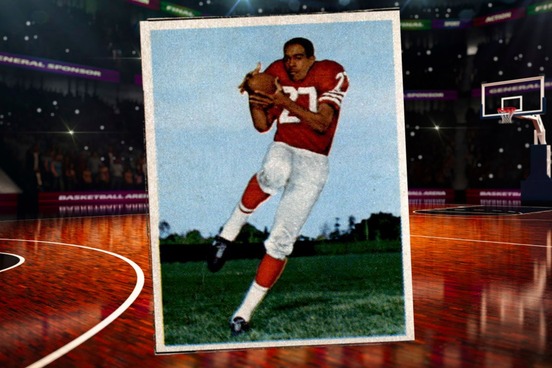
Alley-oop
Definition: a basketball play in which a leaping player catches a pass above the basket and immediately dunks the ball; also: the usually looping pass thrown on such a play
“The 49ers have an ‘Alley Oop’ play designed especially for the springy Owens. ‘It’s a high pass,’ explained Owens. ‘I have to jump for it.’”
— The Seattle Times, 17 October 1957
Although it has become known primarily as an acrobatic basketball move, the earliest distinct evidence we currently have for the alley-oop as a sports play is from the world of football. The football use of this word appears to have originated in reference to a play that was designed around the superb jumping abilities of Raleigh Climon Owens, a football and basketball star of the mid-20th century.
However, the roots of this word run throughout several sports, and there is no one field which may claim the entire parentage of alley oop. It is thought to have been formed in imitation of allez-oop (a cry among circus acrobats), which itself probably comes from the French allez, meaning ‘to go.’ Alley-oop was in occasional use among circus performers in the early 20th century. Throughout the 1920s and 1930s alley-oop is often seen in newspaper captions, accompanying the picture of someone, athletic or otherwise, flying through the air. It also served as the name of a racehorse, who ran a considerable number of races in 1925 and 1926.

Jump shot
Definition: a shot in basketball made by jumping into the air and releasing the ball with one or both hands at the peak of the jump
“The Platte county champions then proceeded to score three consecutive baskets from beneath the hoop while the best Thayer could do was a jump shot.”
— Omaha World-Herald [Omaha, NE] 15 March 1936
The word jump shot did not originate in basketball, as it was also term for a type of shot in billiards since the middle of the 19th century. However, given the disparity between the level of popularity enjoyed by billiards and basketball, it is not surprising that the term should have come to be more identified with the latter than the former.
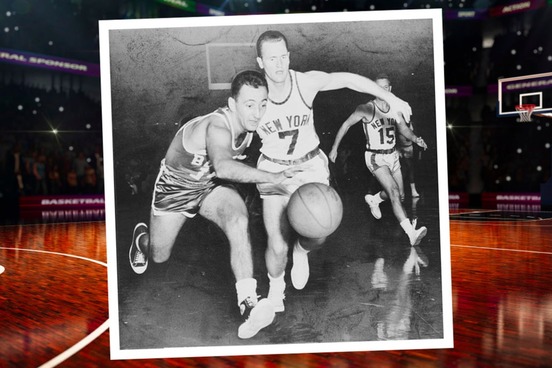
Playmaker
Definition: a player who leads the offense for a team (as in basketball or hockey)
“Crowley sank nine baskets and Fisher six. Charles Small, a center, was the playmaker on many occasions.”
— Boston Herald, 20 December 1933)
Playmaker has seen its meaning go through a number of shifts over the past few centuries. It first began to be used in English in the 16th century to refer, reasonably enough, to a person who made plays. In the 1920s the word was appropriated by the world of hockey, and used to describe a player who was skilled in facilitating scoring by others on his team.
He has a great shot and with a play-maker like Deacon Waite to feed him, probably would rise in a scoring way.”
— Boston Herald, 10 December 1929
Several years after playmaker was used by sports writers to refer to hockey players it began appearing in reference to basketball players as well. Although it would appear to be employed primarily to refer to players in these two sports, playmaker is occasionally used to refer to participants in other areas, both athletic and otherwise. Since at least the 1940s it has been used to refer to someone who facilitates things (not necessarily scoring of goals), and is often seen paired with political.
Governor Dewey, reputed to be one of the best political “play makers” in the nation, has quarterbacked himself out of a big hole, analysts said last night.
— Democrat and Chronicle [Rochester, NY] 17 November 1947Vice-President Lyndon Johnson, the Senate Democratic majority leader then, was the central political playmaker.
— The Christian Science Monitor, 6 April 1962
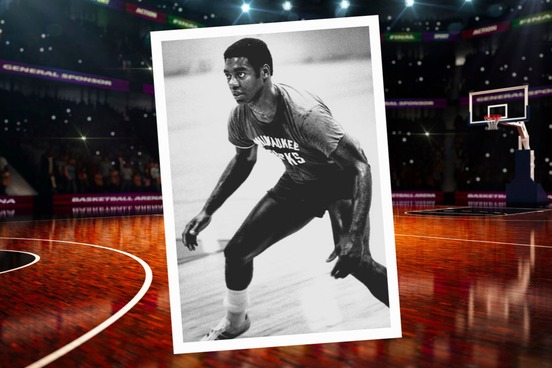
Point guard
Definition: a guard in basketball who is chiefly responsible for running the offense
“The rebounding is handled so well the Derrick has moved 6-3 Willie Brown outside to play a point guard, or director of offense.”
— The Nashville Tennessean, 15 December 1964
The point guard is the player on a basketball team who calls the plays, and is responsible for directing the offense. The four other positions typically are center, shooting guard, power forward, and small forward. Although the roles played by players in these position may well have been codified early in the 20th century, the titles used for most of them did not come about until the 1960s or 1970s.
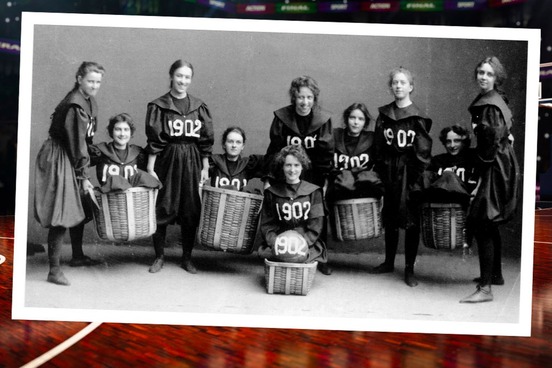
Hoopster
Definition: a basketball player
“Tables Turned By Aggies On B.Y. Hoopsters”
— The Logan Republican [Logan, UT] 23 February 1915
Perhaps because of the similarity it has with hipster, hoopster may well strike many people as a word of recent coinage. In fact, neither of these words are particularly new: hipster has been used since the 1930s, and hoopster has been used to describe a basketball player for over a hundred years now.
Hoopster is but one of many (usually short-lived) terms for a basketball player that have seen use since the game began:
After eleven years of competition, Lone Star basketeers have found that it is practically impossible to defeat the Lumberjacks two consecutive games in their own bailiwick in Aikman Gymnasium.
— Dallas Morning News, 26 January 1943The Kendall cagers started their season with a victory over the Y.M.C.A. quintet when they met last night on the “Y” basketball court.
— Tulsa World [Tulsa, OK] 10 December 1916William Wain, conspicuous in a managerial capacity for baseball, football and basketball teams, has gathered together a team of basketballers that ought to create a sensation if an engagement is extended them.
— Trenton Evening Times [Trenton, NJ] 19 February 1899
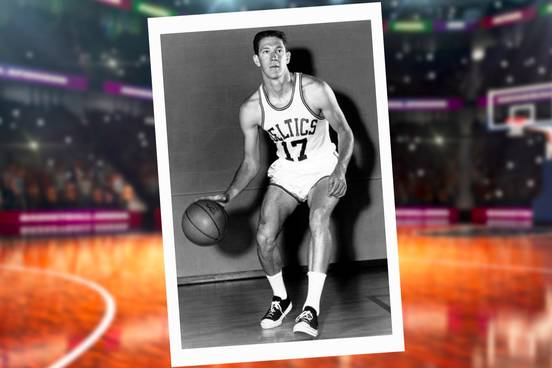
Sixth man
Definition: a player in basketball who is regularly used as the first of a team's substitutes in a game
There has been a close run throughout the entire season for the position of sixth man, and although no substitutes have been used the entire season except in the first game, Stewart has been the first sub in the most number of the contest.
— The Patriot [Harrisburg, PA] 23 February 1918
John Havlicek, who spent 16 seasons playing for the Boston Celtics in the 1960s and 1970s, is widely regarded as the greatest sixth man in NBA history. The position did not, however, originate with him. It is not entirely clear at what point the role of ‘first player off the bench’ was codified in basketball, but written evidence would suggest that it was some time in the beginning of the 20th century.
Definition: a clock in basketball that displays a countdown of the time within which shooting the ball is required
Basketball without a shot clock is a prelude to boredom, an introduction to a yawn, an invitation to a waltz.
— The Sunday Republican [Springfield, MA] 16 January 1977
The shot clock was introduced into professional basketball in 1954, in an effort to combat what had become the lackluster pace of many games. In the early 1950s, teams who were ahead fell into the habit of simply passing the ball from player in order to run out the clock and preserve their lead.
The phrase run out the clock did not start with basketball, however, as it had been used in football since 1942.

Brick
Definition: a badly missed shot in basketball
You know," Driscoll explains. "Air balls (shots that don't hit the rim or backboard) and glass balls (shots that bounce off glass backboards like rockets). Around the league they call them 'bricks' because the ball falls like a brick after one of these shots."
— Sports Illustrated, 18 January 1971
The humble brick has been put to many uses in English over the centuries. The word came to our language from the Middle Dutch bricke, and has retained its original meaning (a block of clay that has been shaped into a rectangle, and is used for building purposes) for more than 500 years now.
But along the way it has taken on a dizzying variety of additional senses, including (but not limited to) ‘a toy block’, ‘a good fellow’, ‘brick cheese’, and ‘gaffe’. The basketball sense of brick is one of the more recent ones, with written evidence dating from the beginning of the 1970s.

Ball hog
Definition a player on a team sport (such as basketball) who controls and shoots the ball excessively instead of passing it to teammates : a player who hogs the ball.
The word hog has been applied to people who take more than their fair share of something for over a hundred years now. The pairing of hog with ball is not restricted to basketball, although that is among its earliest uses in reference to sports.
Yet with Fulks, the amazing shotmaker for the Philadelphia Warriors of the Basketball Association of America, it’s different. He’s a team player, not a ball hog or a basket hanger.
— Times Journal (Vineland, NJ), 22 Jan. 1947I told them at one point this year that they all need to go and get a refund from their AAU program because they weren’t taught anything about basketball other than being a ball hog and that it’s all about you.
— Pittsburgh Post-Gazette, 18 Apr. 2023

Fast break
Definition a quick offensive drive toward a goal (as in basketball) in an attempt to score before the opponent's defense is set up
Many aspects of basketball have changed over the past century: new plays, moves, tactics, and rules have all been added in this time. Throughout it all the fast break has been a part of the game, as players have been running these since the 1920s.
When the Hasbrouck Heights team received the ball on a fast break the forwards were always down under their basket but to no avail, for the men who were supposed to work the ball down the court always passed to the wrong man.
— Bergen Evening Record (Hackensack, NJ), 19 Dec. 1928
